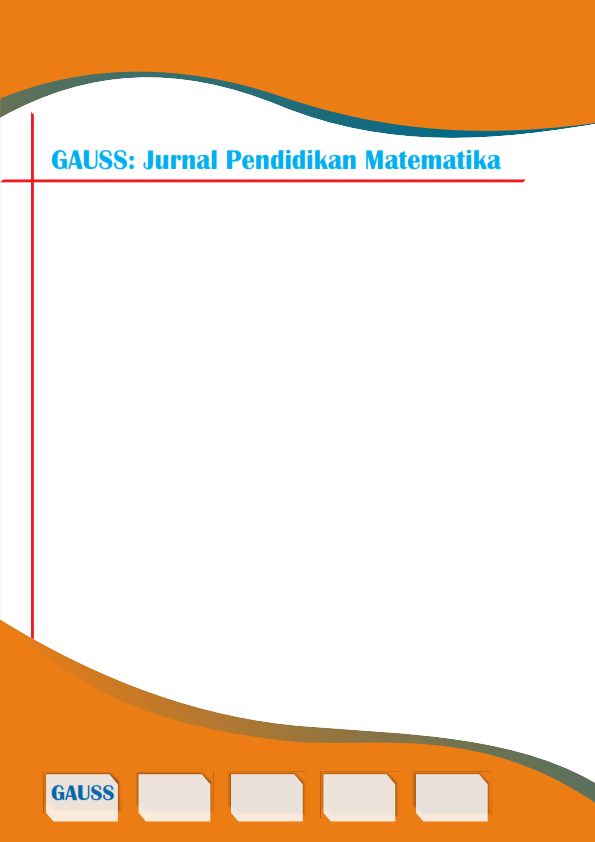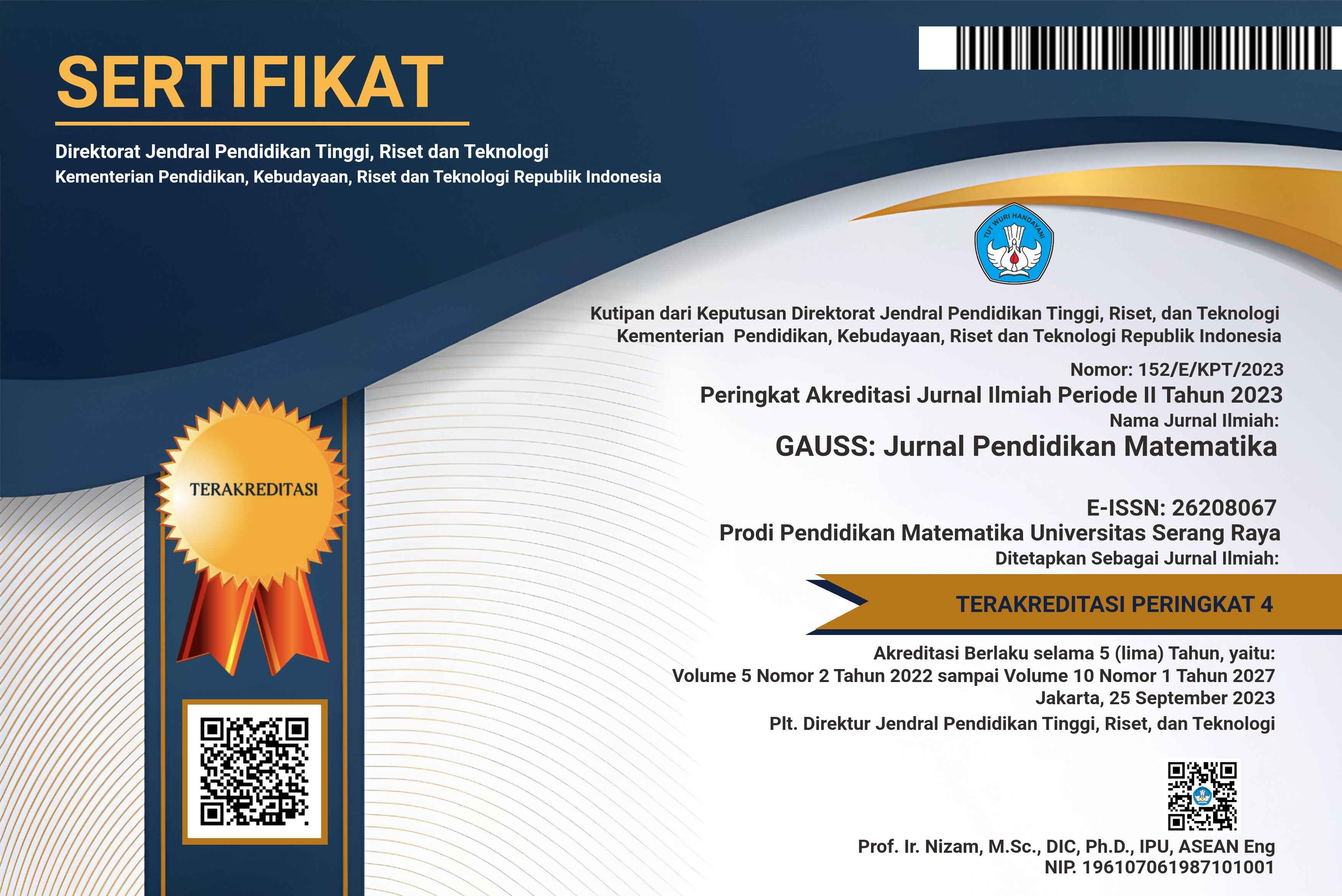Desain Lintasan Belajar dengan Menggunakan Problem Based Learning pada Materi Luas Permukaan dan Volume Prisma
DOI:
https://doi.org/10.30656/gauss.v6i2.7957Abstract
This type of research is design research, namely research that focuses on developing theories and learning activities. This research aims to design a learning trajectory on the surface area and volume of prism using PBL and its applicationin learning using PBL. The research was carried out at SMP Negeri 2 Larantuka in 2023 on 12 students in class VIIIb and was 16 students in class VIIIa. This research was carried out in accordance with the stages proposed by Gravemeijer & Cobb, namely the preparation stage (preparing for the experiment), the research stage (design experiment) and the retrospective analysis. The result obtained are that the design of a learning trajectory for surface area and prism volume material using the PBL model is theoretically able to facilitate the discorvery of the concepts of surface area and prism volume for class VIII SMP students. The learning process also contains PBL steps, namely orientation, organization, guiding individual and group investigations, developing and presenting work result, analysis and evaluating.
Keywords: Learning Trajectory, Problem Based Learning, Prism
Downloads
Published
Issue
Section
License
Authors who publish articles in GAUSS : JURNAL PENDIDIKAN MATEMATIKA agree to the following terms:
- Authors retain copyright and grant the journal the right of first publication with the work simultaneously licensed under a Creative Commons Attribution-ShareAlike 4.0 International License that allows others to share the work with an acknowledgment of the work's authorship and initial publication in this journal.
- Authors are able to enter into separate, additional contractual arrangements for the non-exclusive distribution of the journal's published version of the work (e.g., post it to an institutional repository or publish it in a book), with an acknowledgment of its initial publication in this journal.
- Authors are permitted and encouraged to post their work online (e.g., in institutional repositories or on their website) before and during the submission process, as it can lead to productive exchanges, as well as earlier and greater citation of published work (See The Effect of Open Access).




